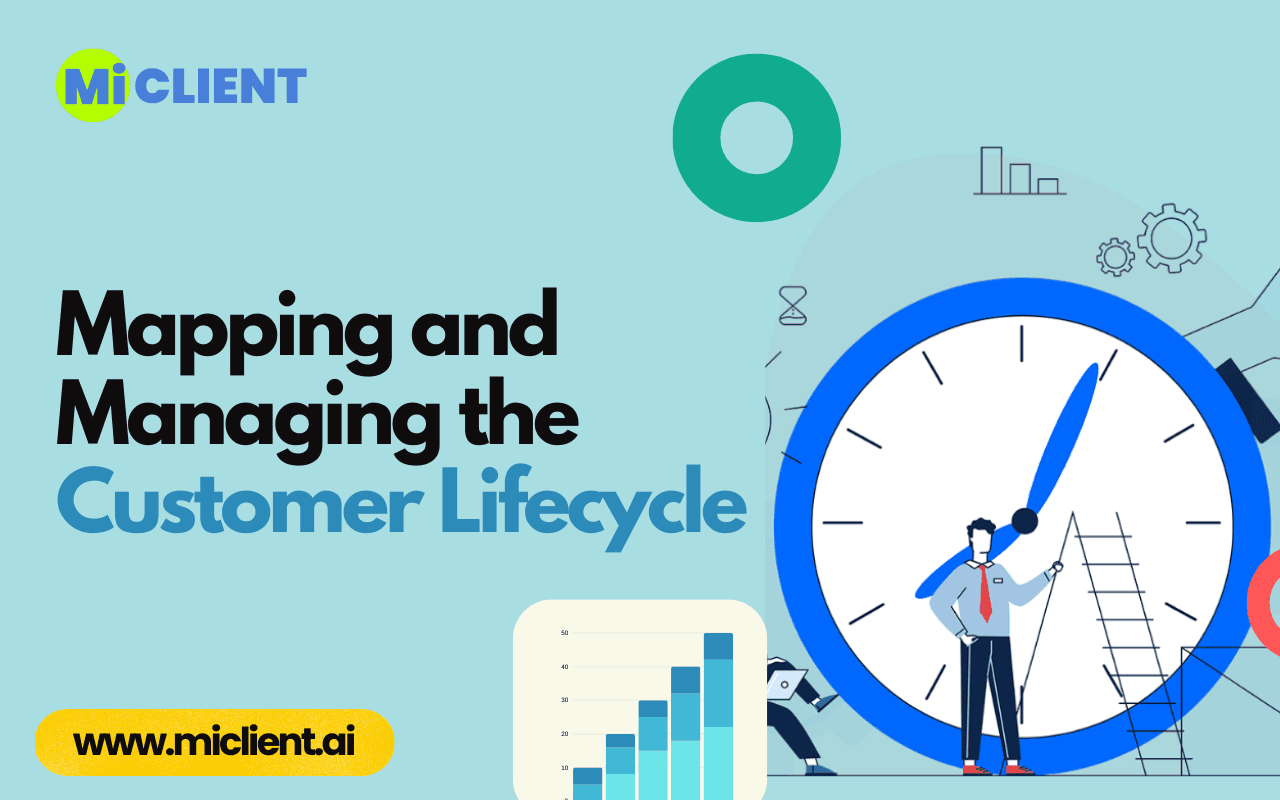Building a strong customer base is essential for any business's success. However, it's equally important to understand that the customer journey doesn't end after a sale. To truly thrive and achieve long-term success, businesses must focus on transforming prospects into loyal advocates.
This process involves effectively mapping and managing the customer lifecycle. A well-mapped customer lifecycle can help you identify opportunities to improve the customer experience at every stage, from lead generation to retention. It can also help you measure the success of your efforts and make sure you're getting the most out of your customer relationships.
What is a customer lifecycle map?
A customer lifecycle map is a visual representation of the customer journey. It typically breaks the journey down into a few key stages, such as:
Awareness: This is the stage where the customer first becomes aware of your business. They may have seen an ad, read a review, or been referred by a friend.
Consideration: This is the stage where the customer starts to think about whether or not they want to do business with you. They may be comparing your products or services to those of your competitors.
Decision: This is the stage where the customer makes a purchase decision.
Onboarding: This is the stage where the customer starts using your product or service.
Retention: This is the stage where you work to keep the customer happy and engaged so they continue to do business with you.
How to create a customer lifecycle map
There are a few different ways to create a customer lifecycle map. You can start by brainstorming the key stages of the customer journey. Then, you can gather data about what your customers are doing at each stage.
This data can come from surveys, customer interviews, and your CRM system. Once you have a good understanding of the customer journey, you can start to map out the different touchpoints that customers have with your business at each stage. These touchpoints can include things like website visits, email interactions, and phone calls.
How to use a customer lifecycle map
A customer lifecycle map can be used to improve the customer experience at every stage of the journey. For example, if you see that a lot of customers are dropping off at the consideration stage, you can use the map to identify the specific touchpoints that are causing the problem.
Then, you can make changes to those touchpoints to improve the customer experience. You can also use a customer lifecycle map to measure the success of your efforts.
For example, you can track the number of leads that convert into customers, the average customer lifetime value, and the customer churn rate. This data can help you identify areas where you're doing well and areas where you need to improve.
Cultivate Customer Advocacy
The ultimate goal of the customer lifecycle is to transform satisfied customers into passionate advocates for your brand. Encourage customers to share positive experiences on social media, write testimonials, or refer friends and colleagues. Implement referral programs that offer rewards to both advocates and their referred customers. Harness the power of word-of-mouth marketing to expand your customer base organically.
A well-mapped customer lifecycle is an essential tool for any business that wants to attract, retain, and grow its customer base. By understanding the customer journey and identifying opportunities to improve the experience, you can increase customer satisfaction, boost sales, and build long-term relationships with your customers.









